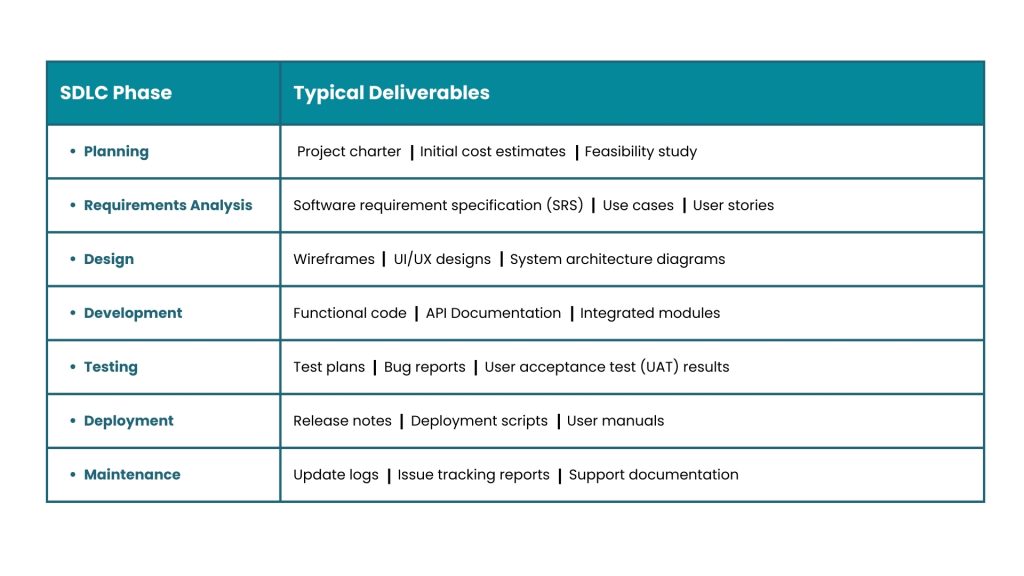Every thriving software or mobile application results from a meticulously structured software development process that guarantees efficiency, quality, and scalability. In the absence of precise planning, failures are inevitable. The software development process is the essential link between your concept and the final software solution.
Whether you are embarking on your first major software project or revamping an existing software development process, customer satisfaction hinges on achieving the desired product quality. Speed is crucial. Accelerating the software development process enhances the time available for your products to hit the market.
Delivering solutions ahead of competitors is vital for businesses aiming to lead the market. Understanding the critical role of speed in software development is paramount. Here are ten strategies to refine your software development process.
Measuring the Success of Software Development Projects
The quick answer to measuring the success of the software development process is “It depends.” Depending on who you ask, different people will have different definitions of success. However, a few common aspects of the software development life cycle model usually indicate a successful outcome.
Deliverables in the Software Development Process
The business and IT teams collaborate to develop a list of deliverables before starting a software project. Deliverables, such as the various software programs you might be growing and the features you include in those programs, are the byproducts of software development companies in Washington.
Any team’s challenge is delivering the project on time while thoroughly following the software development process. So, keeping your word on those promises is one way to succeed in software development. You might ponder some of the issues listed below:
In the context of the software development life cycle, setting deliverables early helps prevent confusion and scope creep, especially when dealing with fast-paced industries. Here’s a table outlining common deliverables at each phase of the SDLC:

Customer Satisfaction
It is not the only metric for success in using deliverables. What will the company’s response be when the finished product is delivered? The success of the company for which the software is built is crucial to the software development process.
- Are they pleased with the finished item?
- Do they think all of their reasonable requests have been granted?
- Are they satisfied with the product’s usability?
- Have you kept to your budget?
- Did you convey your message?
The success of the company for which the software is built is crucial to the software development process. If they like what you’ve produced, you’ve made progress toward success.
Product Engagement
Consider product engagement as a final point. Think about it:
- Do customers like the product?
- Is it improving their quality of life in terms of entertainment or productivity?
- Are there few to no bugs there at the moment?
- Are they spending the expected amount of time or more on the software?
- Are customers returning for more?
- Are there any positive reviews or pieces of feedback?
The client must be satisfied, but it’s also crucial that the software users find it simple and enjoyable to use.
10 Tips To Improve Your Software Development Process
1. Plan and The Importance of Proper Planning
The first step in improvement is preparation and planning. Before making any changes, it is important to have a good understanding of the software.
A good grasp of the software development process helps you more easily understand the improvement areas and gaps. Develop a formal workflow and outline how you will implement the necessary changes. Design, strategize, assess, and stay focused.
Consider crafting a workflow to streamline your approach. While this may take time and effort, the results will be worthwhile.
2. Pinpoint Problems Early and Solve Them Efficiently
The subsequent phase is identifying the problem. To comprehensively understand the software development process, you must locate the specific areas that require refinement. It’s vital to allocate sufficient time to assess and address the root cause accurately. Utilizing various tools and techniques can help uncover problems within the software development process.
Key steps to identify and solve problems:
- Analyze Existing Streams: Consider the current development workflows to identify workflow issues and inefficiencies.
- Use Evaluation Tools: Utilize tools such as performance monitors, debugging tools, and workflow trackers to identify root causes.
- Collect Input from Team Members: Regularly talk to developers, testers, and others involved to identify issues.
- Review Historical Projects: Look at the prior software releases to learn and not repeat software issues.
- Triage Issues: Focus on the issues that have the most impact on development timelines, product quality, or user experience.
Once an issue has been identified, the solution approach should be considered. The solution must be flexible and scalable to ensure its successful application in the software development life cycle.
3. Code Quality Control in the Software Development Process
How do you ensure the integrity of the code in your Software Development Process? This is a critical consideration. If manual or automated testing approaches are adopted, the associated expenses will likely rise.
Providing clients with software containing bugs can lead to a much greater cost and erode their trust. A second developer must review the code, and implementing unit testing is also a crucial step in the software development process.
Key code quality control steps:

4. Tracking Project Progress
Integrating regular meetings, a straightforward communication method, and discussing specific work within the team is critical for maximizing the efficiency of the software development process. It is essential to eliminate excessive people and distractions from business, such as phone calls from the sales team.
Although it is not realistic to work this uninterrupted way and occasionally be able to concentrate in the same way, you could successfully stimulate your team’s capacity to focus. It can become complicated to stay on top of your work and simultaneously focus on your responsibilities, especially with multiple projects.
You will need to manage your projects to organize the software development process’s overall life cycle.
5. Ongoing Developer Training Is A Key
In the dynamic software development industry, continuous developer training is essential. Each tech conference unveils emerging technologies, frameworks, and themes of interest, leading to the need to enhance developers’ capabilities.
Therefore, making their growth a priority becomes even more critical. As a manager, as you prepare your team for tomorrow’s challenges, think about how you can develop your team members and encourage them to stretch their limits. You might incur some small increases in operating costs.
However, you will minimize the risk of falling behind in the competitive landscape. When planning your next budget, factor this consideration into the equation.
6. Become a User As Well As a Developer
Constantly evaluate. Testing is crucial for identifying weaknesses within the software development life cycle. This becomes especially important when creating software for consumer use. It’s not enough to just build; actively use the product to assess its performance.
Adopt the mindset of the end user. If you design APIs, ensure they serve a practical purpose. By viewing it from this angle, you’ll better understand the significance of usability. If the software doesn’t resonate as valuable to you, it won’t be for others. Avoid focusing solely on your experience, and prioritize how the user interacts.
7. The Power of Pair Programming and Knowledge-Sharing
The key to superior quality lies in collaboration. Two sets of eyes are far more effective than one. A combined knowledge from two minds often surpasses what two separate individuals could achieve.
Before merging code, allocate time for pair programming and thorough code reviews. These practices will help improve code quality and uncover potential issues that might be missed otherwise. You’ll be surprised by how much you can gain from the process of sharing expertise.
8. Risk Management in the Software Development Process
Stay prepared for unforeseen challenges. Strive to handle setbacks smoothly whenever possible. Establish a risk log with action strategies to mitigate and control risks at the earliest stages.
The software development team must create a framework to mitigate risks and warn clients of future issues. The goal is to identify potential risks early on and determine the potential impact on your project’s schedule, budget, and quality.
Use effective risk management techniques to reduce the risk of a project failing. Create a comprehensive risk register and assess all the components essential in the software development process.
9. The Role of Communication in Software Development
Effective communication plays a pivotal role in fostering successful relationships, both in personal and professional settings. For optimal software quality, the project team must be consistently updated through transparent communication channels.
Key communication strategies:
- Regular updates: It is essential to conduct frequent check-ins and status updates to align the team.
- Clear communication channel: Use collaborative tools (such as Slack, Trello, or Jira) for smooth communication.
- Established KPIs: Have a system for tracking and measuring software quality using clear Key Performance Indicators (KPIs).
- Access to anyone in the team: To maintain transparency, allow team members to access the KPIs regardless of level or experience.
- Open Feedback Loop: Encourage continuous feedback to address concerns and improve the process.
Utilizing these strategies will help maintain alignment and cohesion, ultimately driving the success of the software development process.
10. Security Decisions in the Software Development Process
Security can be achieved differently, with businesses utilizing distinct software development methods. However, all software development life cycle stages incorporate essential phases. A reactive approach, often addressing issues as they arise, focuses on software security more effectively than dedicating resources at the early design stages.
When all team members prioritize security during the design phase, especially when making crucial product decisions, they can safeguard software security and prevent breaches. Security should be constantly considered throughout every decision-making phase, as customer needs are integral.
Occasionally, project managers can be overzealous and possessive. These emotions can arise from various potential factors such as insufficient time, unreasonable timelines, incorrect resource management, or the desire to remain in control and micromanage employees. In this context, managers may observe or start to remind team members of their responsibilities. This limits employees’ ability to be independent and impedes their work.
Final Thoughts
Software development can be done in several ways, and every business has its distinct method. Following these steps can streamline and optimize your software development process. That said, most software development processes typically consist of several key phases.
Fully understanding the essential stages of the software development process is crucial before applying the recommended strategies for refining your workflow.
The improvements outlined above are some of the most effective practices for enhancing the process. They are straightforward to implement and lead to favorable results. Are you ready to transform your software or app idea into implementation? Connect with Integrated IT Solutions to simplify your software development in Washington. Contact us now to get started!
FAQs
What is a Software Development Process?
A Software Development Process is a structured set of stages for planning, designing, coding, testing, maintaining, and supporting a software application. Any software or application will travel through this phase before reaching the end user.
How Does Static Analysis Support Software Development Processes?
Static code analysis is a form of debugging open-source programs that conducts a complete code review without executing the program. This review is comprehensive and ensures that particular legal standards are observed.





